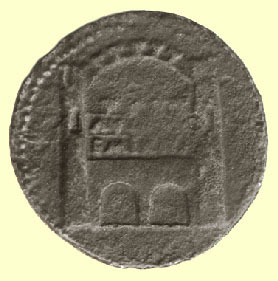 Contents -
Previous Article -
Next Article
Contents -
Previous Article -
Next Article
Many early civilizations were known for the creativity of their people in the arts and literature, and others for the skill of their craftsmen in metal, wood and stone. The Chinese, Egyptians, and Greeks made great strides in discovering the principles of pure mathematics and science. The Chinese had reliable clocks at a very early date and Hiero of Alexandria (a Ptolemaic Greek living in Egypt) built a working steam turbine in about the year 200 B. C. Certainly, these early civilizations had advanced cities, which required a certain mastery of architecture and civil engineering. By comparison, these ancient cities were sanitary, well - defended, had an adequate water supply, and were well connected with roads to other parts of the empire or kingdom in which they were located.
By contrast, the Romans were a civilization of engineers and builders. In all of their history, no great names in science or mathematics beckon to us from across the ages as those of their military geniuses or literary greats do. In the applying of pure knowledge to practical uses, however, their engineers are unsurpassed until one reaches modern times. Without the ability to manufacture parts to standard dimensions close enough to allow them to be interchangeable in finished products without filin and fitting, they nevertheless had huge factories capable of large scale mass production. Engineers traveled with their armies building roads and bridges. In fact, a knowledge of engineering was almost a requirement for advancing through the ranks. After they conquered new territory and created a new province, their engineers laid out cities to a standard plan and provided them with excellent roads and a clean water supply. When Julius Caesar had to cross the Rhine with his army, he built a pontoon bridge on the spot using the engineering skills of his soldiers and forced labor of the local tribesmen. Later, a much larger permanent stone bridge crossed the Danube. They invented concrete using pouzzolana cement that would set and harden underwater.
Roman roads and bridges are famous for their longevity. They were "built to last a century" and many have lasted 22 centuries. The Via Appia, built in 312 B.C., is still in use in Italy today. Roman bridges served the American General George Patton during World War II. The famous World War II general was a romantic and a history enthusiast have given him a sense of historical satisfaction to use bridges over which Pompey, Caesar, Sulla, Septimius Severus, and Maxentius marched their armies. Eight large aqueducts served Rome and many of those continued to provide water throughout the ages and still serve today. A Roman town was planned from the time of the original site selection for adequate water supply, sewer system, adequate production of surrounding farmland, commercial access, roads, and population density. Towns given by the emperor to retired veterans of 20 years' service (COLONIAE) were planned and built by the vets themselves. The modern German city of Cologne was just such a town and derives its name from its Roman designation as a COLONIA. Unfortunately, Rome itself was often poorly planned, crowded, prone to conflagration, and everything that the engineered towns weren’t. The wonders of Roman engineering are also the subject of many volumes.
This is just a sampler of some of the interesting subjects that can be studied in connection with classical ancient history. I haven't even begun to scratch the surface here. I believe that the history of artifacts, technology, art, pottery, ships, coins, and other physical things lend a lot of interest to what students (and many adults) consider dry political and military chronicles. Our history books today cover too broad a time span and offer too little detail to be truly interesting. I believe that the standard high school history text is better suited to be an outline for graduate students than as a core history text.
Go to next article:
Go back to previous article: